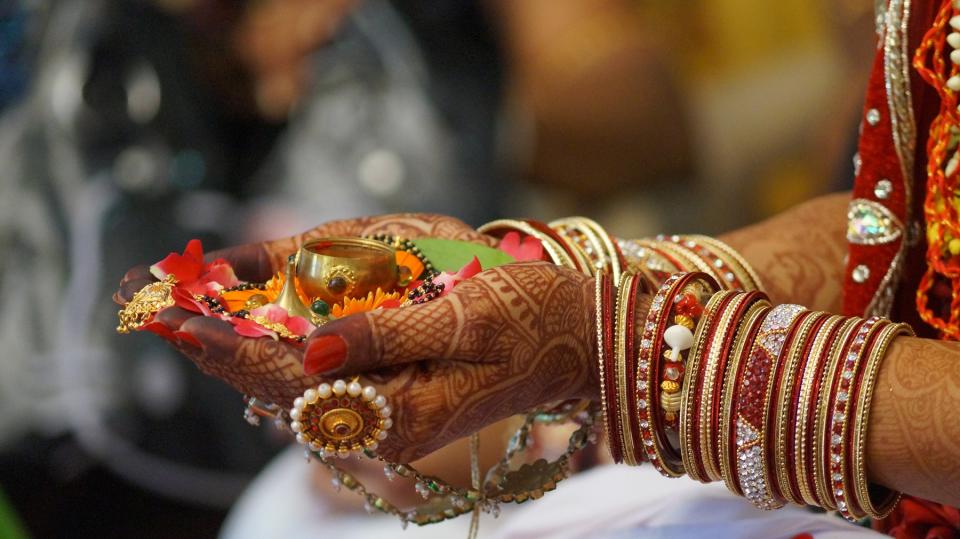Concerns Arise As Legal Marriage Age For Women Set to Increase From 18 to 21
The Union government is considering raising minimum legal age of marriage for women from 18 years to 21 years as a means of lowering maternal mortality rates and improving nutrition levels for women. Prime Minister Narendra Modi had mentioned in his Independence Day speech that a task force has been formed for the same.

Many welcomed the move, as raising the legal age of marriage can help women to pursue education and even join the work force, thereby giving a chance for women to be financially independent – a requisite for any nation to achieve gender equality.
According to research by the National Family Health Survey (NFHS), women who have had 12 years of schooling are more likely to marry later in life in comparison to women who have been forced out of schooling.
Also, it is dangerous for underage brides to bear children, not just physically but mentally too – as teenagers are psychologically underdeveloped for child rearing. According to the UNICEF, pregnancy-related complications are the number one cause of death among girls between 15 and 19 years of age.
“Because adolescent girls are still growing themselves, they are at greater risk of complications if they become pregnant. Moreover, child brides are less likely to receive proper medical care while pregnant or to deliver in a health facility, compared to women married as adults,” says UNICEF.
It has found that the number of women and girls who die each year in India due to issues related to pregnancy and childbirth has dropped from 103,000 in 2000 to 35000 in 2017, a 55 per cent decrease. However, UNICEF adds, coverage of life-saving health interventions and practices remains low due to gaps in knowledge, policies and availability of resources.
Access to health services is often dependent on a families’ or mother’s economic status and where they reside. Add to this, India had hardly 24,000 Primary Healthcare Centres till 2012, with just one doctor at each centre. Although the current government had promised 40,000 PHCs by 2020, data from the Ministry of Health and Family Welfare shows less than 31,000 PHCs so far.

Ruha Shadab, a medical doctor who has earlier worked with NITI Aayog in policy making, tells MAKERS India that a higher age of marriage is definitely good news for educational and healthcare reasons. However, for achieving the goals of better maternal mortality rate and higher nutrition, she recommends more focus on healthcare as well as a change in mindset towards women’s health.
“There are certain tests like Endometrial biopsy (conducted on uterus) that can be done in India only if you are married – because we don’t even consider ‘being sexually active’ as a possibility for unmarried women.” If unmarried women who need to consult with gynaecologists are frowned upon, making the marriage age higher will only aggravate the issue of lack of healthcare for women.
Society’s reservations
According to the NFHS, in 2015-16, 26.8% women aged 20-24 were married before adulthood, while the same number was 47.4% in 2005-06. Notably, in a poll conducted by MAKERS India, 76% of 9143 voters have said that the government’s plan to increase the marriage age to 21 is not a good idea.
Patriarchal social standards still dictate majority of marriages in India – where families of same caste and equal stature “arranging” the marriage is still the norm. Horoscopes still decide relationships even among urban youngsters, while honour killings are still rampant across rural areas. Virginity of the bride is still the factor that decides her “worth,” and the younger the bride is the lesser the dowry her family has to pay to the groom.

Shakun Sethi, founder of sexual wellbeing platform Tickle.Life, says, “We often get emails from our female users in developing countries asking how their boyfriend/husband will find out about their virginity. This is not a health concern. Girls are sexually active relatively early nowadays; what we need is effective sex education for boys and girls.”
Also Read: Women From Rajasthan Following Entrepreneurship's Path to Success
Law and Enforcement
Concerns remain on the effect of law enforcement when it comes to protecting Indian women from their own families, who often force them into marriage before turning 18. Celebrating girls’ first menstruation is a widespread practice even today; the ceremony indicates that the girl is now of “marriageable age.” It could not be more clear that when it comes to girls’ future, the focus is only on marriage. Unfortunately, this means that once they hit puberty, many girls drop out of school too.
In fact, it is the implementation of the law that is the real hurdle. Alakshi Tomar, founder of Delhi-based startup Trucup, says, “We need to educate people about the laws, before we can enforce them. What do we know about the positive impact of making the marriage age 18 legally?”
Trucup makes reusable menstrual cups and provides awareness on menstrual health by conducting workshops in rural areas.
Alakshi tells MAKERS India, “We still see underage brides in our workshops, especially in states like Jharkhand. Currently, only NGOs actively discourage early marriage and encourage girls’ education. Instead, NGOs need to work with the State and Panchayati Raj because people listen to them. Local government can help spread the message, as people will listen to them more.”
While law will take its course, it is the effective implementation and earnest efforts for a change in mindset that can write a new reality for women in India.
Also Read: Is It Hypocrisy To Ask For A ‘Period Leave’? Women Take on the New Policy

 Yahoo Finance
Yahoo Finance 